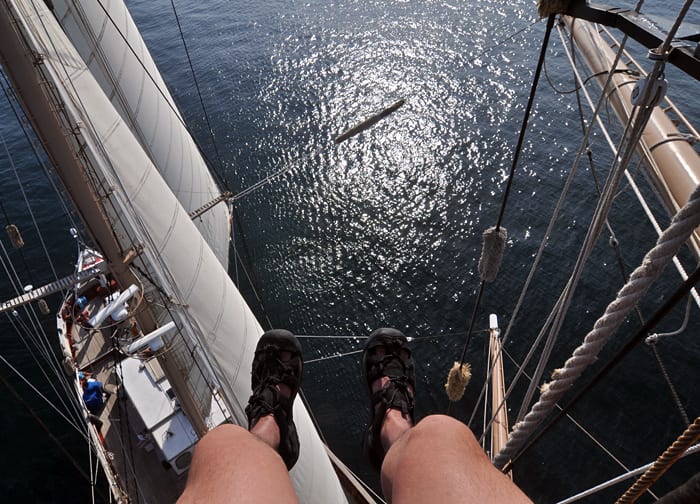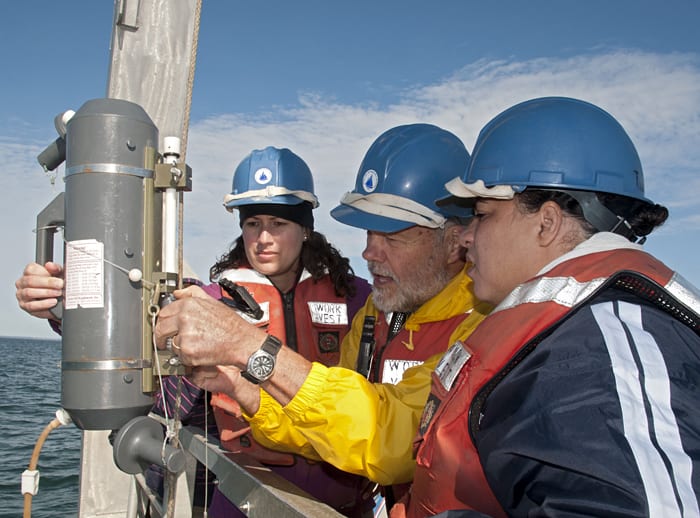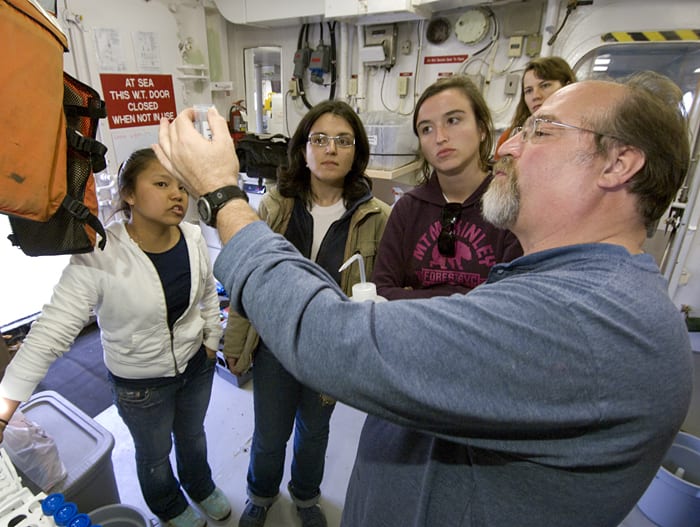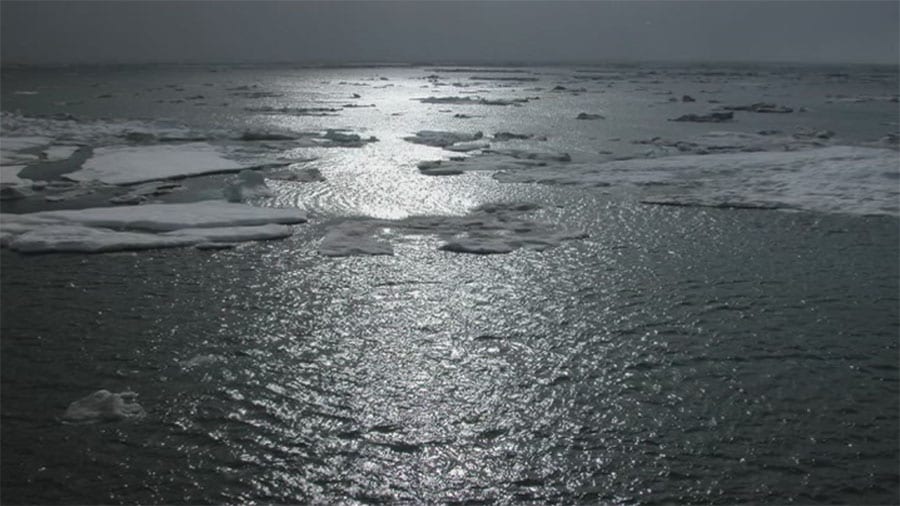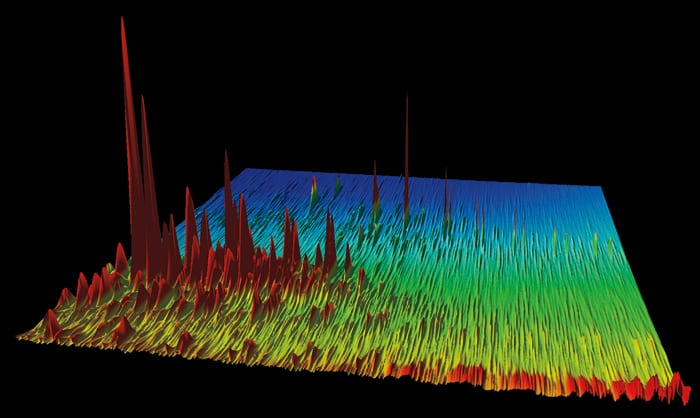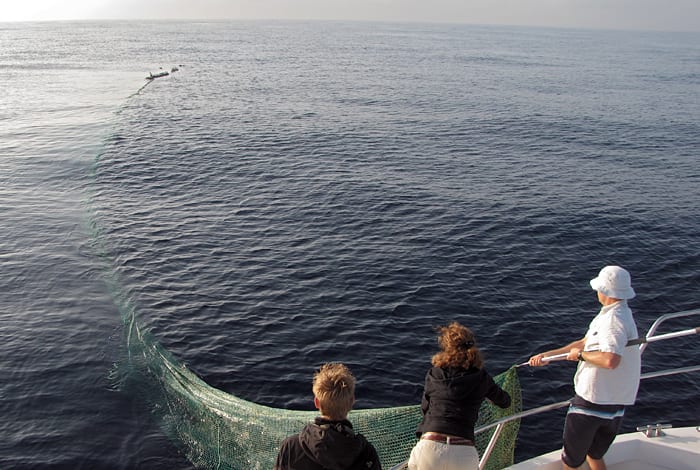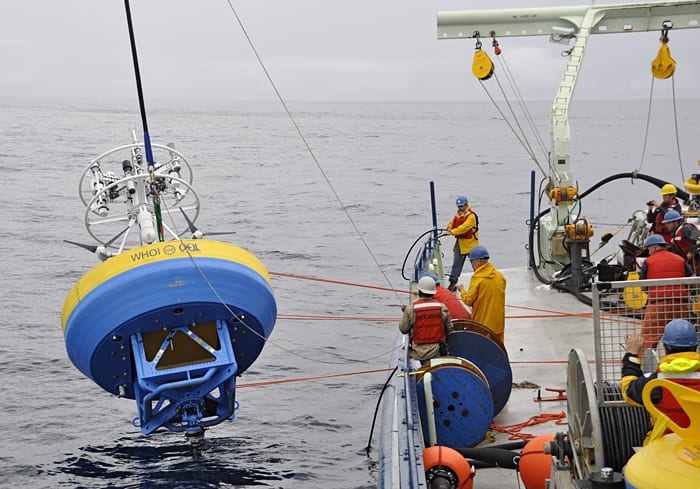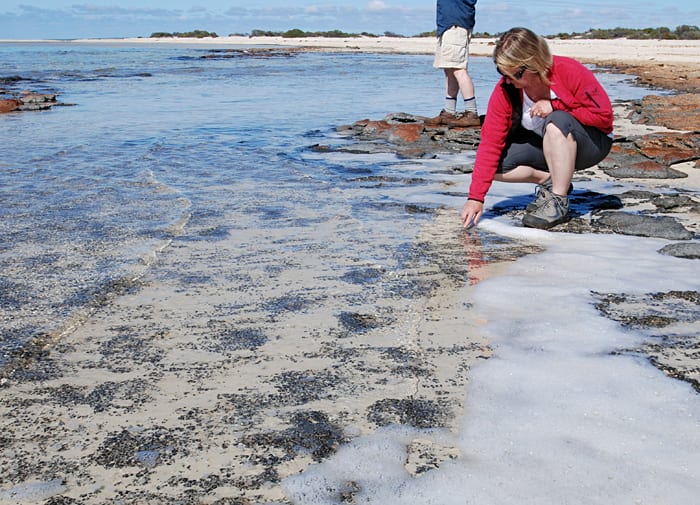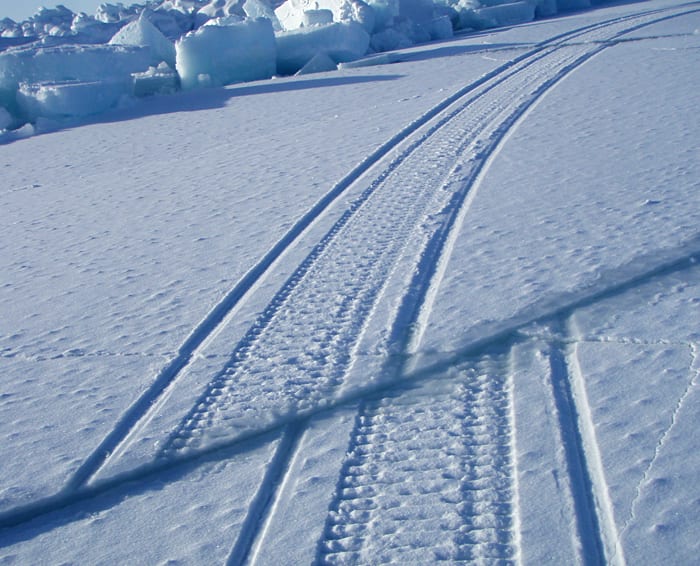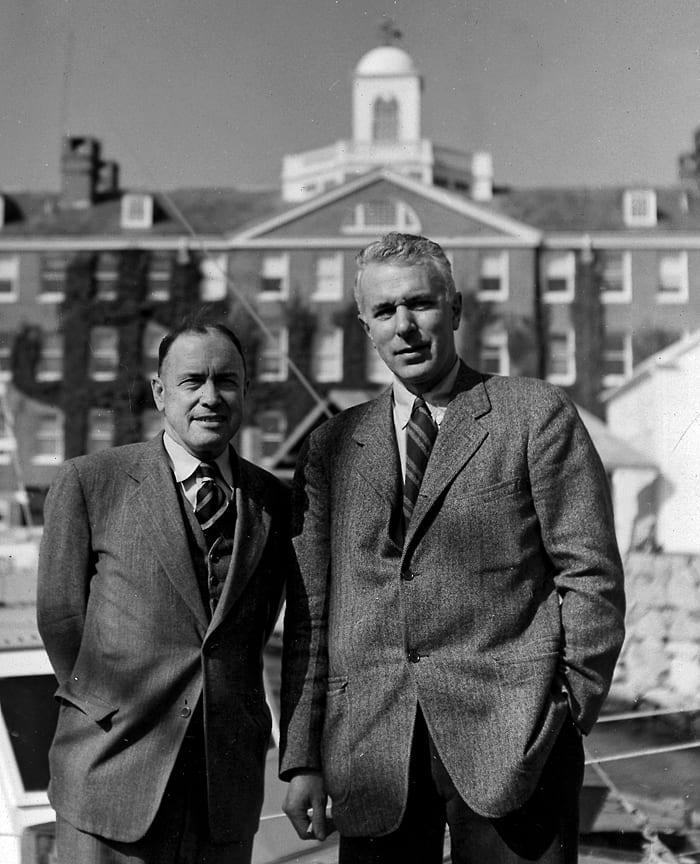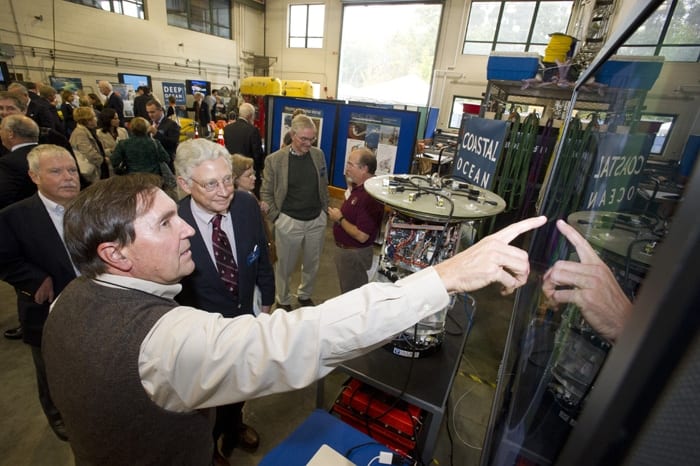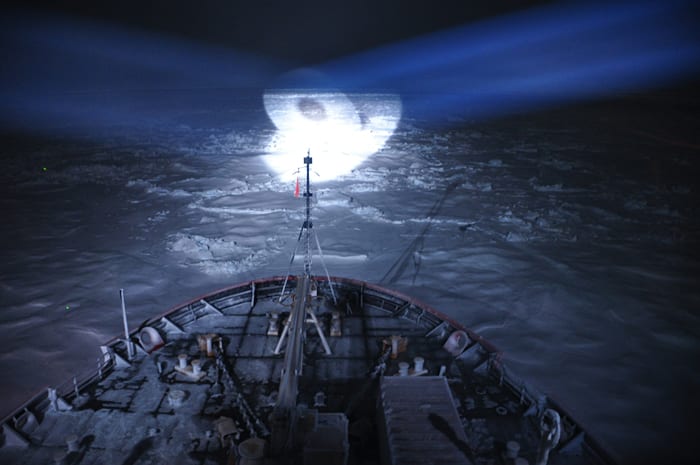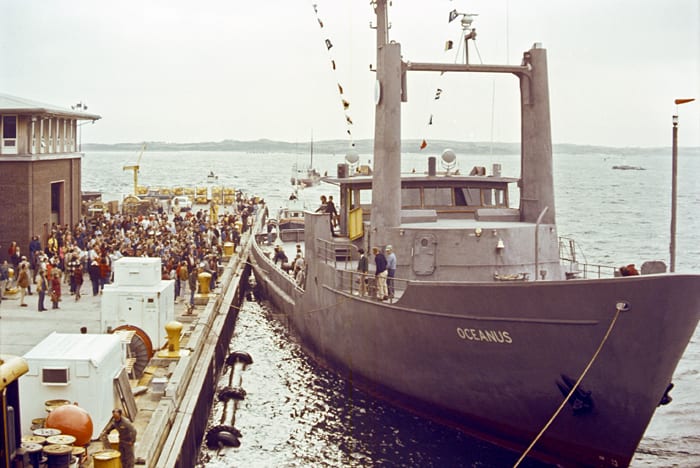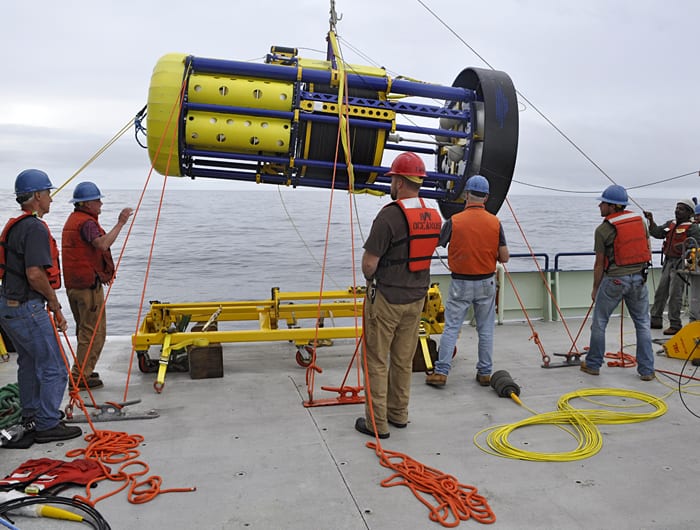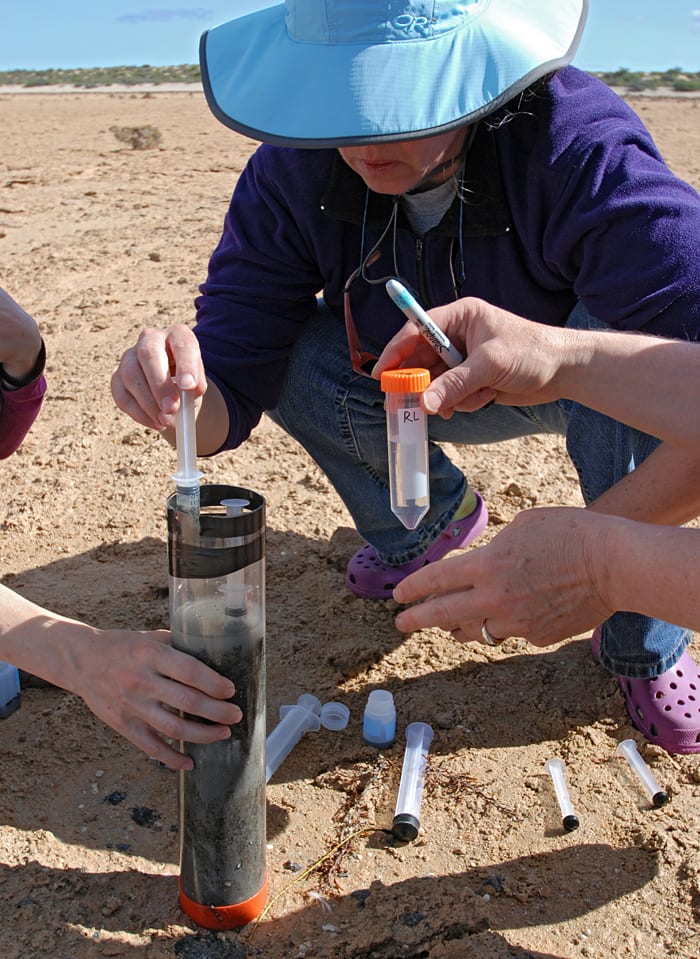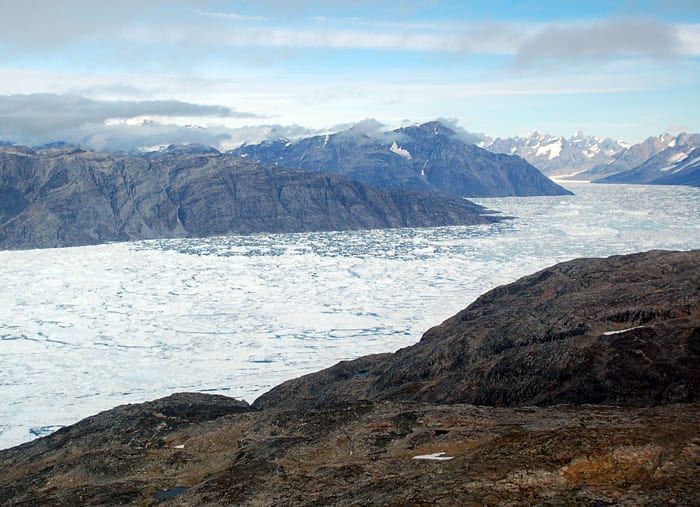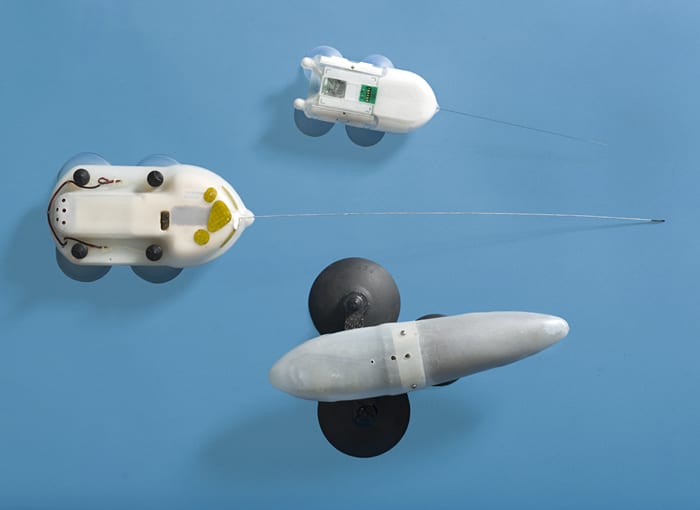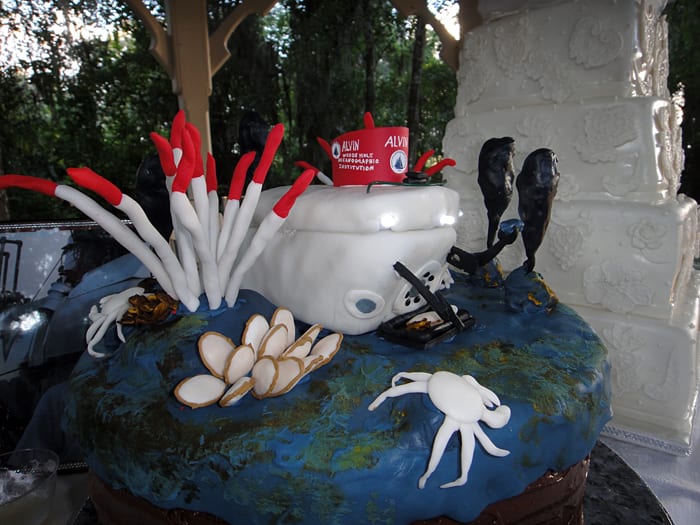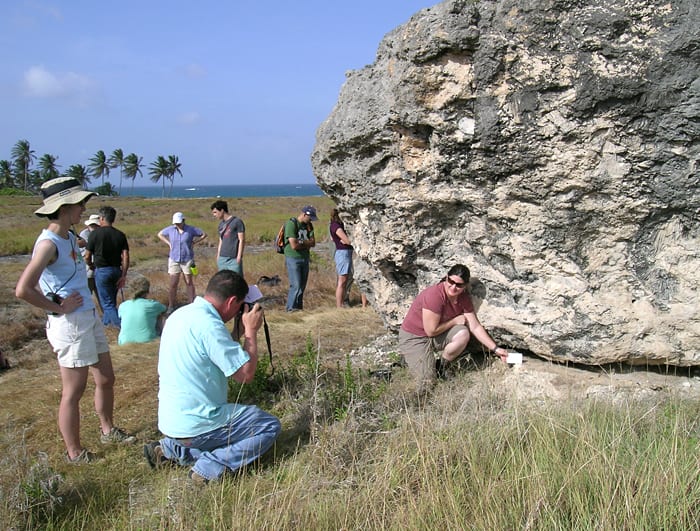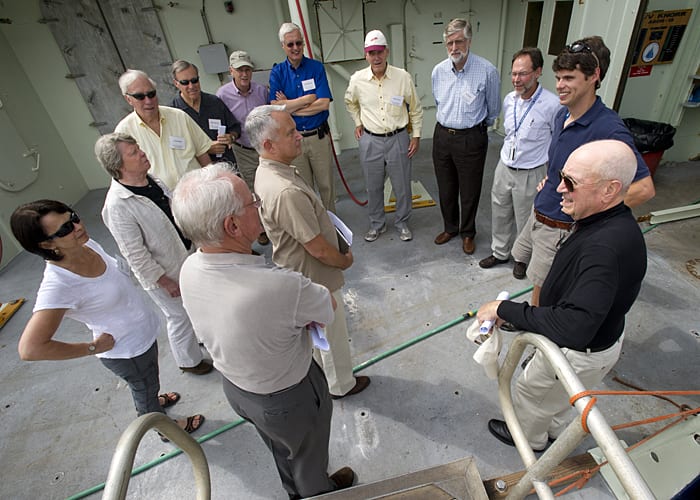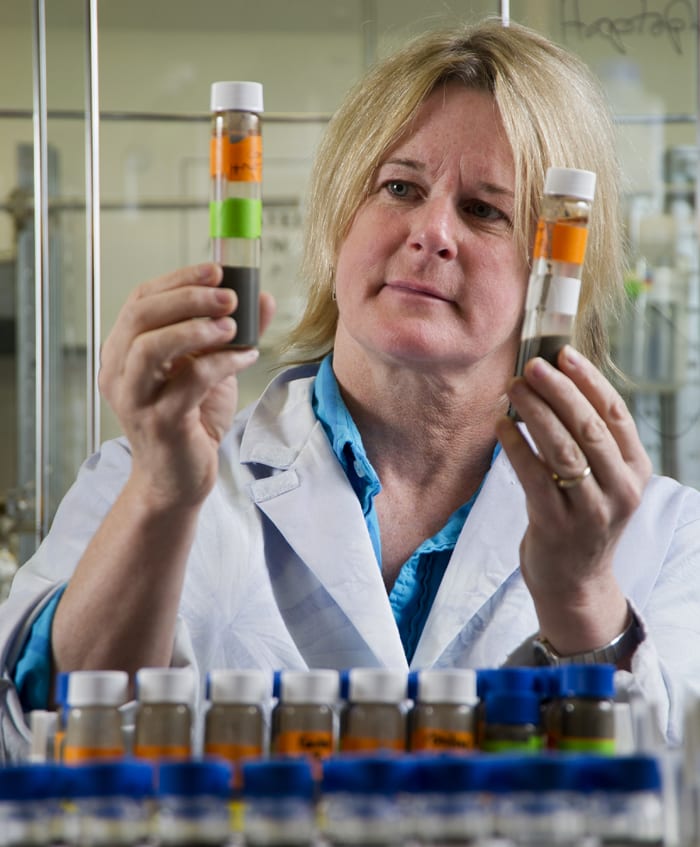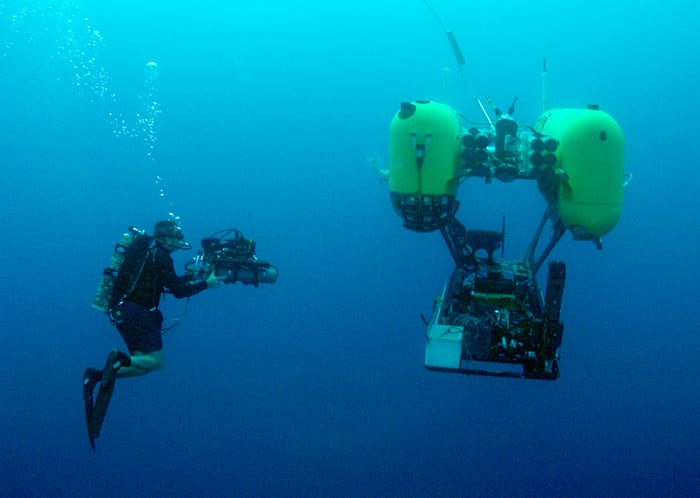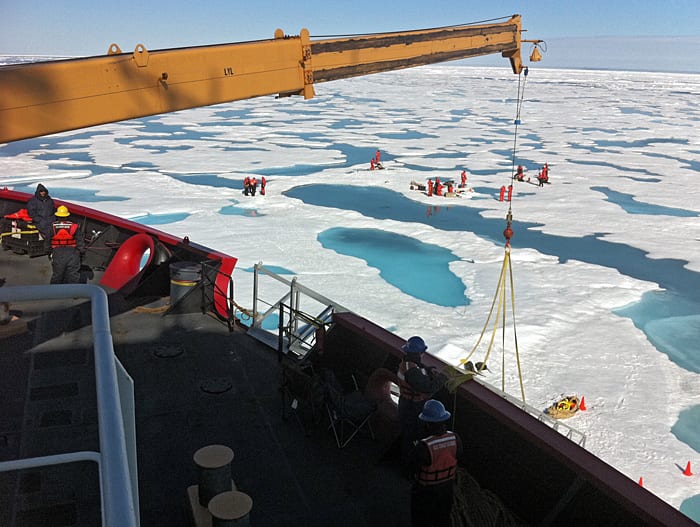Multimedia Items
View from the Top
Each summer, graduate students in the MIT-WHOI Joint Program are welcomed to Woods Hole Oceanographic Institution (WHOI) and to oceanography with the ten-day Jake Peirson Summer Cruise aboard the Sea…
Read MoreBack to School
WHOI’s Hovey Clifford (center) showed Melissa Simpson and Oniika Davis Peters from BP how to use a Niskin bottle to take water samples beneath the ocean surface recently. In September,…
Read MoreNearing the End
WHOI researcher Bruce Keafer demonstrated the procedure for filtering water samples for Alexandrium fundyense before a cruise on the R/V Oceanus in 2008. In New England waters, A. fundyense is…
Read MoreInto the Dark and Ice
By Kate Madin :: Originally published online November 4, 2011
Read MoreColorful Chemical Composition
This chromatogram paints a colorful chemical landscape of the oil that leaked from the Deepwater Horizon well in the Gulf of Mexico last year. Each peak represents one of thousands…
Read MoreGiving Marine Life a Ghost of a Chance
During a recent trip to the Mediterranean to study the social ecology of long-finned pilot whales and their reaction to the sound of predators, members of the MED-11 Alboran Sea…
Read MoreA Pioneering Deployment
This Ocean Observatories Initiative (OOI) surface mooring was recently deployed in the future vicinity of the Pioneer Array. Its design represents the type of instruments that will eventually be used…
Read MoreProtists, Protists Everywhere
WHOI microbiologist Virginia Edgcomb examines a protist-rich pool at the edge of Shark Bay, Australia. Protists are the single-celled progenitors of all multicellular forms of life, including plants, fungi, and…
Read MoreStep on a Crack . . .
What seems like an optical illusion is actually a sign of how dangerous working on coastal sea ice can be. WHOI senior scientist Al Plueddemann and engineering technician Amy Kukulya…
Read More1956: WHOI’s Next Chapter
In 1956 Columbus Iselin (right) signed on for a second tour of duty as WHOI’s director, succeeding Edward Smith (left). Iselin came to WHOI to captain the first R/V Atlantis and…
Read MoreHigh Tech in the Commonwealth
Massachusetts governor Deval Patrick (second from right) made his first visit to WHOI on Oct. 12, touring the facilities and learning about some of the instruments and vehicles that have…
Read MoreOcean Institutes “Technology in Ocean Science” Expo
Breaking the Ice
In October, scientists and crew aboard the US Coast Guard ice breaker Healy in the Beaufort Sea encountered strong winds that blew thick pieces of multi-year sea ice into their…
Read MoreFarewell to the Workhorse of the North Atlantic
In November 1975, R/V Oceanus first arrived at the WHOI dock to begin a long and illustrious career of oceanographic research. A mid-life refit completed in 1994 greatly changed the…
Read MoreMulti-tasking in Ocean Research
The Sea Cycler winch, being deployed from the R/V Oceanus, is the largest component of the Global Hybrid Profiler and will eventually be included as part of the Ocean Observatories…
Read MoreSampling Sediments
Joan Bernhard, a geobiologist in WHOI’s Department of Geology and Geophysics, prepares a sediment sample for analysis. Bernhard studies protists (also called protozoa) that live on and in the seafloor.…
Read MoreRestless Glacier
Helheim Glacier, one of Greenland’s largest, empties into the ocean on the southeast coast of the island. The glacier has been retreating over the past decade, and WHOI physical oceanographer…
Read MorePlaying Tag with Marine Mammals
The digital acoustic recording tag (DTAG) was developed to monitor the behavior of marine mammals and their response to sound throughout the dive cycle. As with any piece of oceanographic equipment,…
Read MoreAlvin: Good Enough to Eat
When University of Florida Prof. Mike Perfit and Renee Kattell recently held a party in Gainesville, Fla., to commemorate their wedding earlier in the summer, DSV Alvin made an appearance…
Read MoreOn the Road in Barbados
WHOI research assistant Mary Lardie holds an information card while geochronologist William Thompson takes a photo of a large fossil coral during the 2009 Geodynamics Field Trip to Barbados. Each…
Read MoreA Visit to the Knorr
In August 2011 WHOI hosted the governing board of the National Research Council, one of four organizations that comprise the United States National Academies. The visit included a tour of…
Read MoreProbing for Protists
Virginia Edgcomb, a microbial ecologist in the Department of Geology and Geophysics at WHOI, will be Chief Scientist on the next Dive and Discover cruise, which heads into the Mediterranean…
Read MoreNereus, Ready for Its Close-Up
Videographer Evan Kovacs films the hybrid remotely operated vehicle (HROV) Nereus as it descends from the sea surface. Nereus is called a “hybrid” ROV because it can operate either tethered…
Read MoreICESCAPE Walk
US Coast Guard rescue swimmers and polar bear sentinels from the USCGC Healy stand by as scientists measure sea ice properties during NASA’s 2011 ICESCAPE cruise in the Chukchi and…
Read More
